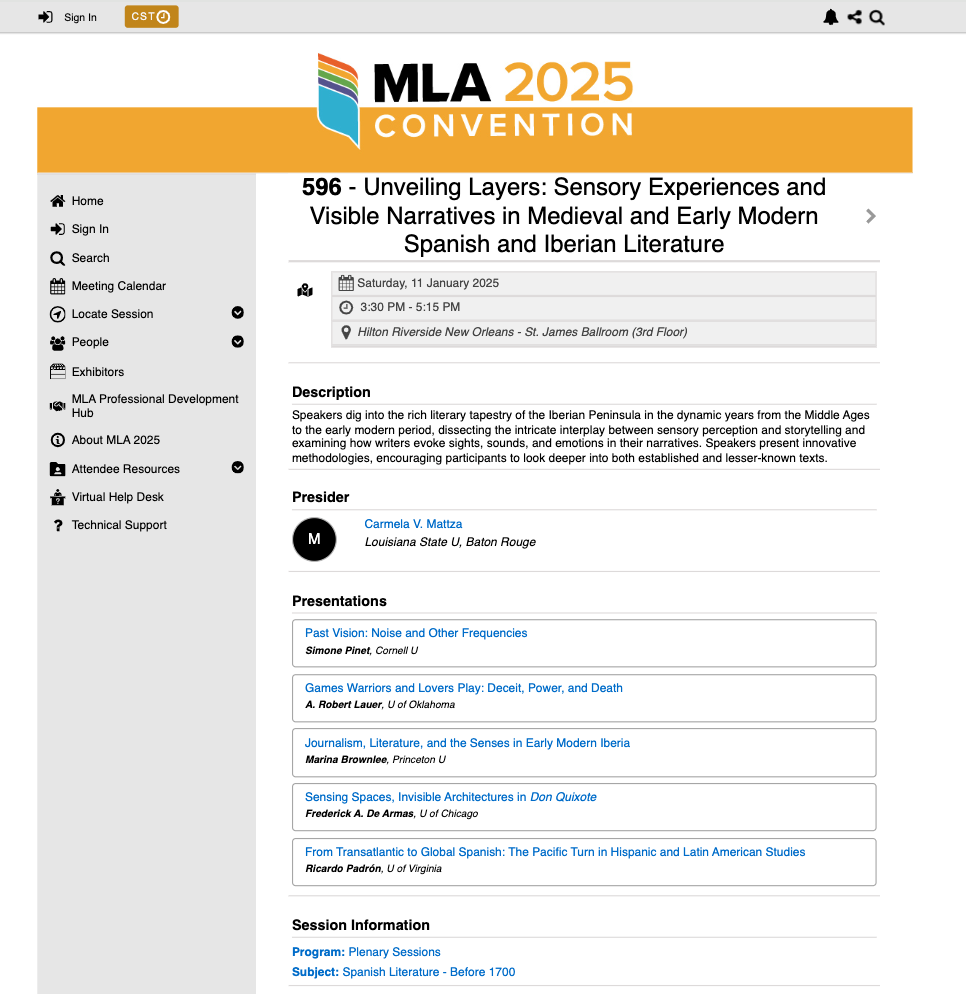
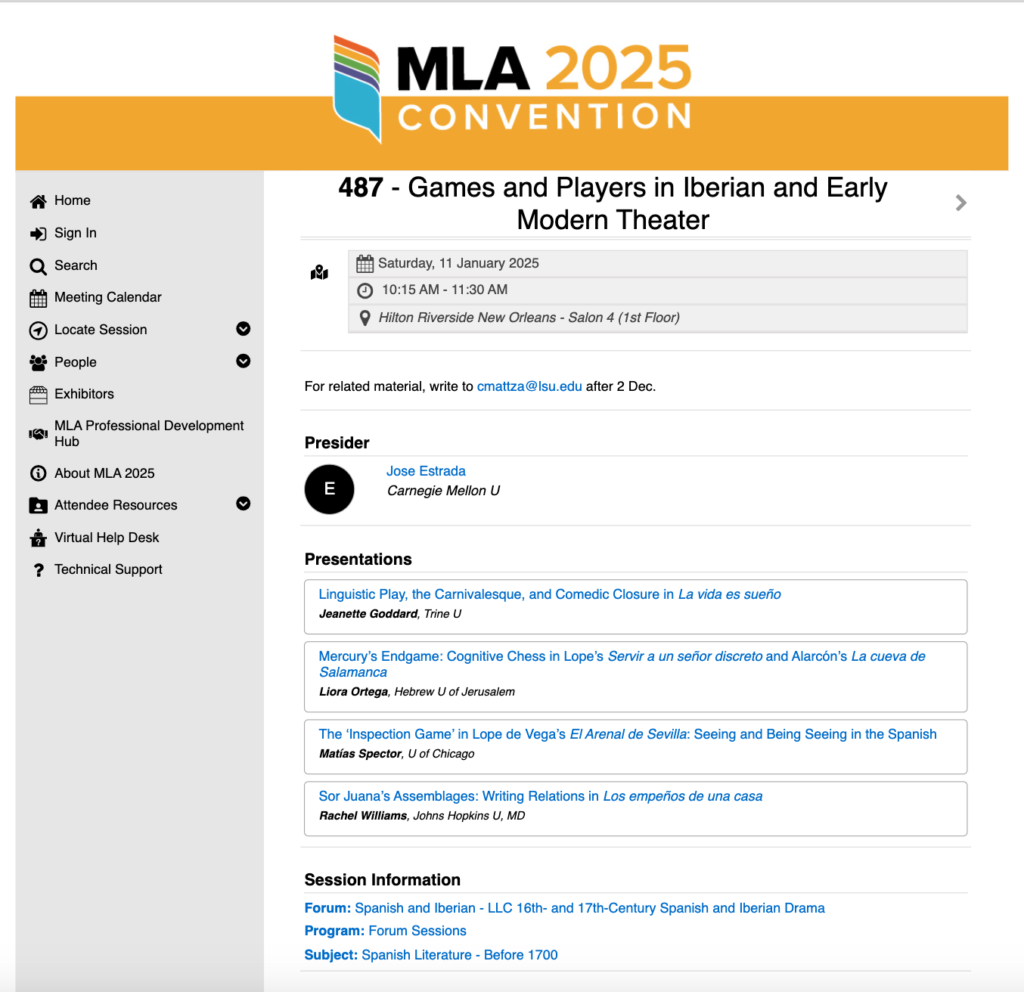
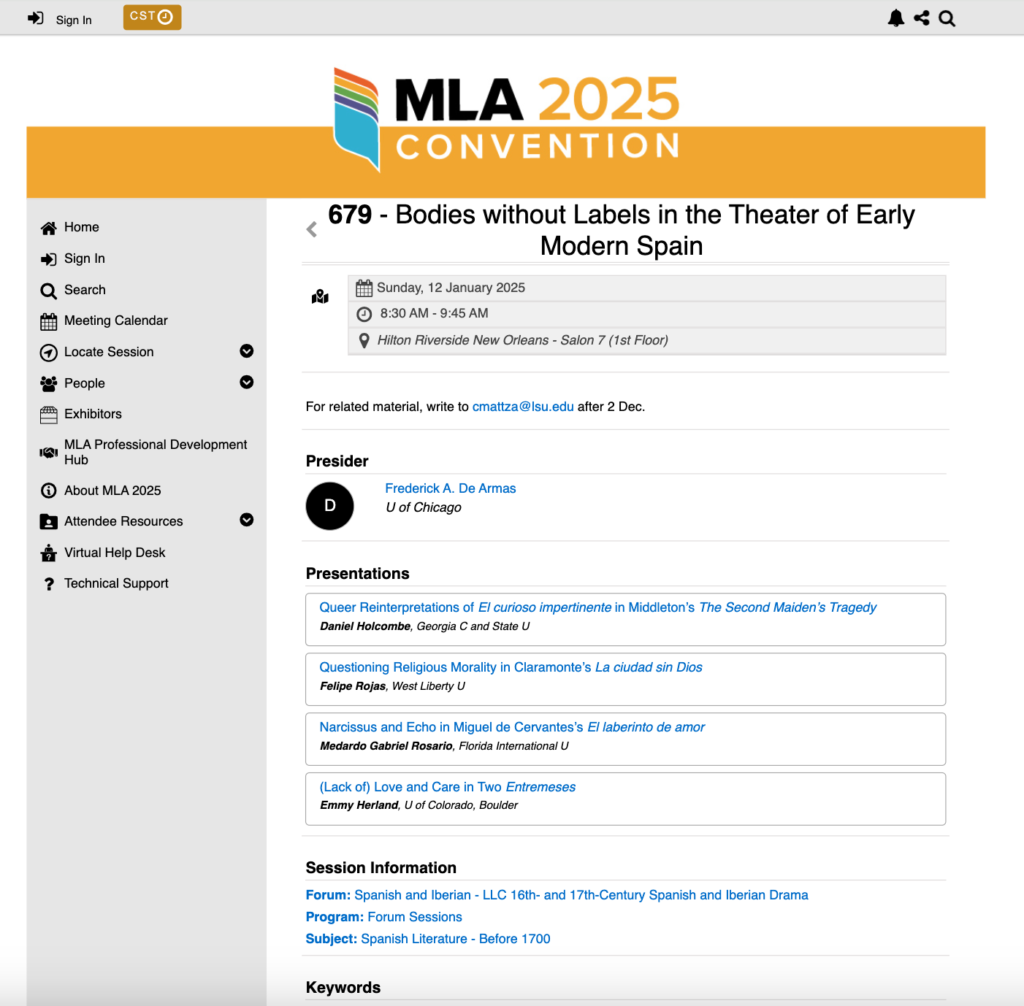



Estudios del Observatorio/Observatorio Studies, vol. 93.
Edición: Instituto Cervantes at FAS – Harvard University
Resumen: Se acaba de publicar el volumen 93 de Estudios del Observatorio/Observatorio Studies, que recopila una selección de seis ponencias del simposio celebrado para clausurar el curso académico 2023-2024 en el Observatorio de la lengua española y las culturas hispánicas en los Estados Unidos. Se trata de la novena edición de las actas de este simposio anual, titulado en esta ocasión New Perspectives on Hispanic Cultures: La traducción entre el español y el inglés en los Estados Unidos / English-Spanish Translation in the US Context. Durante este encuentro académico, celebrado los días 30 y 31 de mayo, investigadores y profesionales de la traducción exploraron tanto aspectos teóricos como prácticos de la traducción entre ambos idiomas.
Los textos en este número 93 de Estudios del Observatorio/Observatorio Studies cubren temáticas variadas, desde enfoques abstractos y literarios —incluyendo exploraciones sobre el traductor como intermediario dialógico entre el autor y la obra traducida— hasta aplicaciones prácticas en inteligencia artificial. Cada trabajo se presenta en su lengua original y los resúmenes se ofrecen en ambos idiomas.
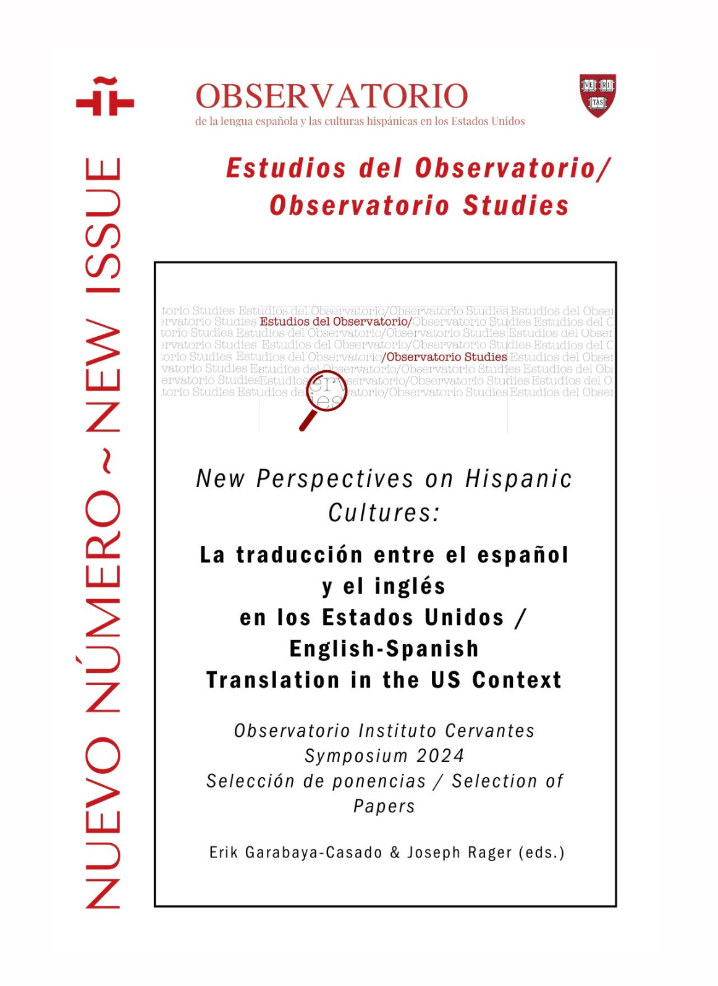
XV Coloquio Internacional de la Asociación de Cervantistas
Instituto Politécnico de Bragança, 28-30 de mayo de 2025
Cervantes y la otredad: límites, fronteras, extranjerías
Keynote Speakers:
Maria Fernanda de Abreu
José Montero Reguera
En esta segunda circular, queremos ampliar la información ofrecida hasta la fecha, además de recordar algunos puntos importantes. La Comisión Local Organizadora (CLO) está presidida por Alexia Dotras Bravo (Departamento de Línguas Estrangeiras, Instituto Politécnico de Bragança) y compuesta por Ana Maria Alves, Carmen Lucas, Cláudia Martins, Elisabete Mendes Silva, Isabel Augusta Chumbo e Isabel Joana Aguiar, todas ellas pertenecientes al mismo Departamento del Instituto Politécnico de Bragança. Por su parte, el Secretariado de la CLO se encuentra comandado por María Fernández Rodríguez (maría.rodriguez@ipb.pt ) y Filipa Raquel Santos (filipa.santos@ipb.pt).
Recordamos los puntos clave para el envío de propuestas. Para el pago, será enviada la información de la cuenta del Instituto Politécnico de Bragança (IPB) en la siguiente circular. En cualquier caso, el pago se debe realizar después de la aceptación de la propuesta de comunicación.
1. Líneas temáticas: el XV CIAC abordará la vida y la obra de Cervantes, con especial énfasis en la visión del Otro, la convivencia entre culturas y nacionalidades en la obra cervantina y la recepción lusófona de Cervantes.
2. Fechas: 28, 29 y 30 de mayo de 2025.
3. Propuesta de comunicaciones: Los interesados en participar en el XV CIAC deben completar el formulario de inscripción adjunto a esta convocatoria (datos personales, filiación académica, título y resumen de la comunicación) antes del 30 de noviembre de 2024 y enviarlo a xvciac@ipb.pt. El comité científico evaluará las propuestas y comunicará el resultado a los interesados, que entonces podrán realizar el pago según las modalidades que se señalen y entrarán en el programa del coloquio.
4. Pago de las cuotas:
a. 50€ (55 USD) para los socios de la Asociación de Cervantistas al corriente de pagob.
100€ (110 USD) para los no sociosc.
30€ (33 USD) para oyentesd.
Gratuita para alumnos, acompañantes y miembros del IPB
5. Lenguas: Serán castellano y portugués, pero, por cortesía transfronteriza, se aceptarán también en gallego y mirandés.
6. Contactos y dudas: alexia@ipb.pt7 –
Otras informaciones: En la próxima circular se ofrecerá información detallada sobre la organización y patrocinios, la página web, que está en construcción, las vías de pago, las opciones de alojamiento, la programación cultural y otros detalles para el viaje.
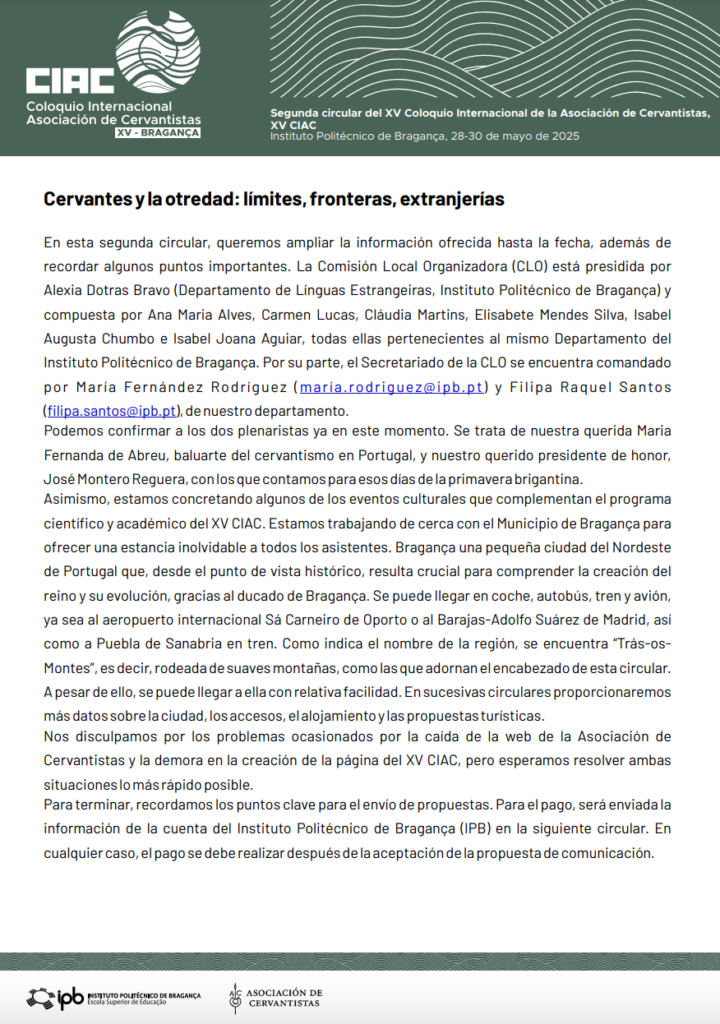
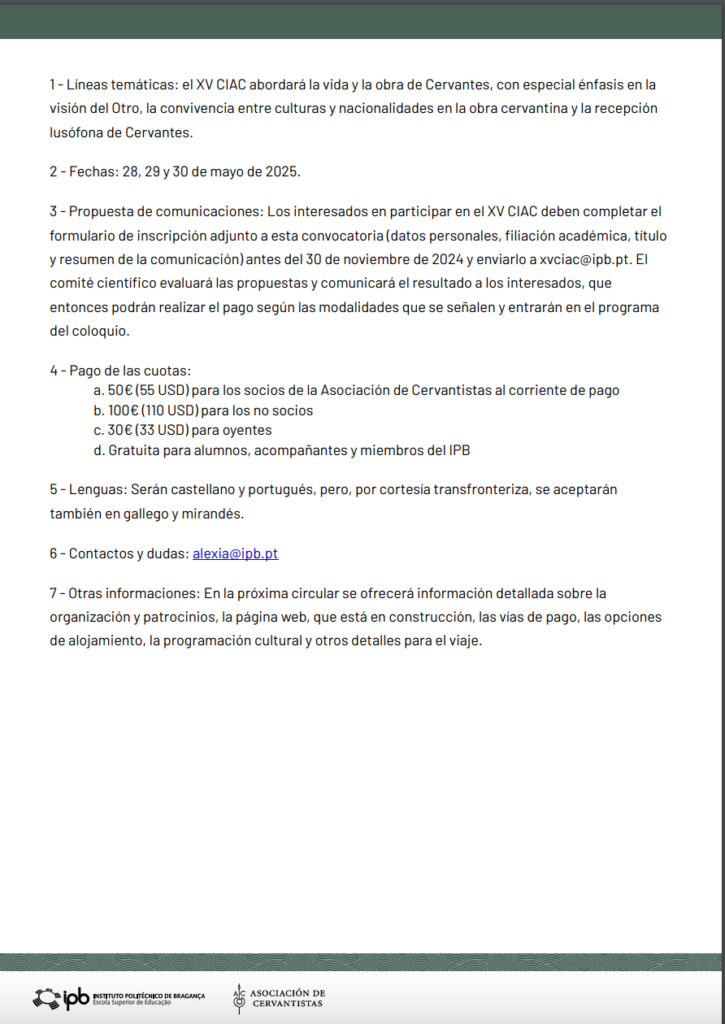
Submissions on adaptations, appropriation, and or translation of Miguel de Cervantes’s Theater exploring the rich tapestry of love, redemption, and human emotions. 250–300-word abstract and 1-page CV due Monday, March 15th, 2024, to Carmela Mattza at: cmattza@lsu.edu.
NARRATIVE
The 16th-17th Century Spanish and Iberian Drama Forum of the MLA invites scholars, researchers, and practitioners in the field of early modern studies to submit their research papers for MLA’s upcoming conference in 2025, focusing on the theme: “Cervantes’s Plays: Love’s Avatars from Disillusionment and Deceit to Redemption, Enlightenment, and Gratitude”.
The plays of Miguel de Cervantes delve deep into the intricate nuances of human relationships, exposing the complexities of love, the challenges of disillusionment, the perils of deceit, and the ultimate journey toward redemption, enlightenment, and gratitude. This panel encourages submissions that offer fresh perspectives, innovative analyses, and interdisciplinary approaches to understanding Cervantes’s exploration of love’s complexities in his theatrical creations and recreations.
Potential topics for exploration include, but are not limited to:
-How gender roles and societal expectations influence the portrayal of love and its challenges in Cervantes’s plays.
-How the portrayal of disillusionment (desengaño) in Cervantes’s plays and its impact on characters and relationships resonate with different cultures and historical periods
-What are the metaphorical and literal depictions of murder and treachery, and their consequences in the Spanish Early Modern Theater.
-How gratitude, reconciliation, and the themes of forgiveness and redemption in the context of love and human relationships are conveyed through state elements, gestures, and acting choices in adaptations and reinterpretations.
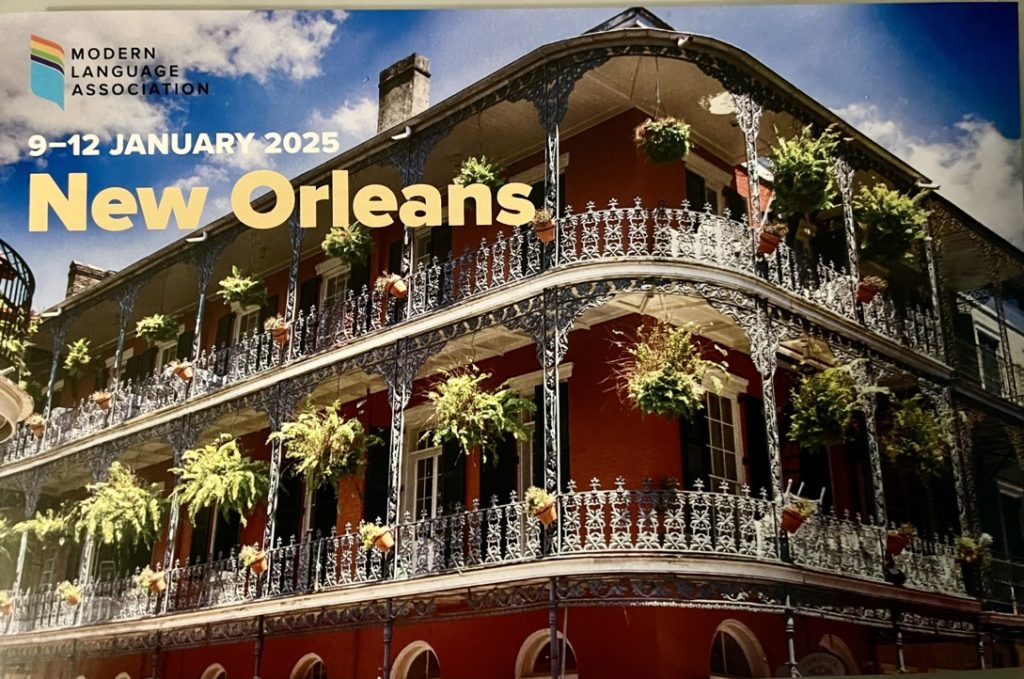
We invite submissions that explore and analyze the role and/or representation of games, players, tricksters, or related topics, in the Spanish comedia. Submit a 250-300 word abstract and 1 page CV by March 15, 2024, to Carmela Mattza at: cmattza@lsu.edu.
NARRATIVE
The 16th and 17th Century Spanish and Iberian Drama Forum of the MLA invites scholars, researchers, and practitioners in the field of early modern studies to submit their research papers for MLA’s upcoming conference in 2025, focusing on the theme: “Games and Players in Early Modern Theater.” The early modern period witnessed a remarkable evolution in theatrical arts, exploring the intricacies of human nature, society, and culture through the lens of dramatic performances and texts. The topic of games did not escape this theatrical scene, where the lexicon involving naipes, among other games, and characters such as tahúres were commonly seen and heard on the stages. A reflection of a society engaging ever more in leisure activities, games quickly became a point of encounter and contention. Cervantes’ invitation to a “mesa de trucos” in the prologue of his Novelas ejemplares is by now a cliché that has helped to view the act of reading as a game. Playwrights, such as Lope de Vega and Tirso de Molina, also took advantage of lexicon and common ludic practices in their theater. In recent history, ludology gained traction ever since historian Johan Huizinga’s influential book Homo Ludens (1938). Different scholars, such Roger Caillois and Brian Sutton-Smith, among others, have further developed, critiqued, and expanded on Huizinga’s theory. The field itself has been influential in sociology, pedagogy, and psychology, to name a few fields. With such broad avenues, this session aims to delve into the multifaceted relationship between explicit or implicit games, players, and cheaters in the early modern theater. We invite papers that explore the dynamic interplay between theatricality, performance, and the socio-cultural context of the time. We welcome submissions that address, but are not limited to, the following topics:
· Theatrical Games: Examining the representation of games (cards, dice, chess, sports, hunting, etc.) within the context of early modern theatrical productions.
· Player Dynamics: Analyzing the roles and dynamics of actors, playwrights, and other contributors to the theatrical landscape as players.
· Audience Engagement: Exploring the interaction between performers and audiences, and the role of games in shaping this relationship.
· Cultural Significance: Investigating the cultural, political, and societal implications of games and performances during the early modern period as staged in theater.
· Theater as game: Approaching theater as a form of game and the playwrights as players.
This panel seeks papers that reveal moments of joyful sexual and gender expression in the theater of early modern Iberia. Submit a 250-300 word abstract and 1-page CV by March 15, 2024, to Carmela Mattza at: cmattza@lsu.edu.
NARRATIVE
Bodies without Labels in the Theater of Early Modern Iberia
We currently live in a time of shifting paradigms regarding gender and sexual expression as we begin to discover bodies without labels. Such was not the case in earlier periods of European history since the Middle Ages when inquisitional and other modes of oppression were common. With this stark contrast in mind, this session seeks papers that will reveal moments of joyful sexual and/or gender expression in the theater of early modern Iberia. More than thirty years have passed since Frédéric Serralta published what was then a surprising essay. He showed that Cosme Pérez (1593-1672), an actor on the Spanish stage, took on the persona of Juan Rana, and under this name he performed in more than fifty theatrical works, mostly interludes (entremeses). These works were written expressly for him, so that his comic genius could be foregrounded. Onstage, many of Juan Rana’s jokes and double entendres turned upon his same-sex desire; and even in some interludes he played with the ambiguity of gender. Although he was arrested for sodomy in 1636, Juan Rana was saved from the clutches of stern justice and quickly freed due to the actor’s close relationship with the noble class and the reigning royal family. The Spanish empire, then, was not simply a lugubrious place where sodomites were persecuted and condemned to death. Rather, it was a space that allowed for multiple voices, although requiring in most instances that they speak through double entendres, hyperbole, enigmas, circumlocutions, and the language of mythology. Lope de Vega, for example, uses such ambiguities and the language of melancholy to depict a friendship that might have seemed to be too close in La boda de dos maridos. Of all mythological figures, Ganymede was the most frequently alluded to when hinting at homoaffective practices. As a multivalent figure, he appears as an image of incest in Lope’s El castigo sin venganza. And what are we to make of Tirso de Molina’s El vergonzoso en palacio where Serafina rehearses a one-woman performance, taking on the role of various male characters with remarkable passion and intensity? Or how do we interpret the affectivity between Cesar (dressed as a woman) and Serafina in Calderón’s Las manos blancas no ofenden? This session, then, seeks to tease out moments in the theater of early modern Iberia where bodies feel joy and attraction as gender roles and labels become fluid or fade away.
· Cultural Significance: Investigating the cultural, political, and societal implications of games and performances during the early modern period as staged in theater.
· Theater as game: Approaching theater as a form of game and the playwrights as players.
This panel seeks papers that reveal moments of joyful sexual and gender expression in the theater of early modern Iberia. Submit a 250-300 word abstract and 1-page CV by March 15, 2024, to Carmela Mattza at: cmattza@lsu.edu.
Con gran alegría les anunciamos la publicación “Cervantine Excesses and Eccentricities” un volumen especial publicado e Cervantes, The Bulletin of the Cervantes Society of America, Volume 42, Number 1, Spring 2022. https://muse.jhu.edu/issue/49506
TABLE OF CONTENTS
Editor’s Note
p. 7, DOI: 10.1353/cer.2022.0000
Cervantine Excesses and Eccentricities
Carmela V. Mattza, Frederick A. de Armas
pp. 9-14. DOI: 10.1353/cer.2022.0001
https://muse.jhu.edu/article/873810
Paisaje sonoro y oralidad en Los trabajos de Persiles y Sigismunda
Ignacio Arellano-Torres (University of Louisiana – Monroe)
pp. 15-34. DOI: 10.1353/cer.2022.0002
https://doi.org/10.1353/cer.2022.0002
Comic Exaggeration, Eroticism, and Character in Don Quijote: Maritornes, Doña Rodríguez, Altisidora
Brian Brewer (Trinity College Dublin)
pp. 35-55. DOI: 10.1353/cer.2022.0003
https://muse.jhu.edu/pub/265/article/873812
Circles, Mills, and Ellipses in Don Quixote 1.8: From Ptolemy to Kepler
Frederick A. de Armas (The University of Chicago)
pp. 57-79. DOI: 10.1353/cer.2022.0004
https://muse.jhu.edu/pub/265/article/873813
Fuera de camino pero dentro del sentido: La lectura de los animales en la tercera salida de don Quijote
Julia D’Onofrio (Universidad de Buenos Aires, Instituto de Filología y Literaturas Hispánicas “Dr. Amado Alonso”)
pp. 81-106. DOI: 10.1353/cer.2022.0005
https://muse.jhu.edu/article/873814
La comedia como mapa y las translationes imperii et studii en El rufián dichoso
José Estrada (Carnegie Mellon University)
pp. 107-126. DOI: 10.1353/cer.2022.0006
https://muse.jhu.edu/pub/265/article/873815
Sobre los excesos de “amor”: La representación del incesto y la violación en la obra de Cervantes
Ruth Fine (Hebrew University of Jerusalem)
pp. 127-149. DOI: 10.1353/cer.2022.0007
https://muse.jhu.edu/pub/265/article/873816
Excesos, desmesuras y extravagancias en una novelesca recreación cervantina: El Príncipe de los Ingenios Miguel de Cervantes Saavedra (c. 1876–1878) de Manuel Fernández y González
Carlos Mata Induráin (Universidad de Navarra – GRISO)
pp. 151-173. DOI: 10.1353/cer.2022.0008
https://muse.jhu.edu/article/873817
Don Quijote vía Twitter: Excesos y excentricidades
Carmela V. Mattza (Louisiana State University)
pp. 175-191. DOI: 10.1353/cer.2022.0009
https://muse.jhu.edu/article/873818
Los desconocidos conocidos de “El Licenciado Vidriera” y las manoplas de Bernie Sanders
Brian M. Phillips (Jackson State University)
pp. 193-210. DOI: 10.1353/cer.2022.0010
https://muse.jhu.edu/article/873819
The Alchemy of Excess: The Hermetic Prologues of François Rabelais for Gargantua and Miguel de Cervantes for the Novelas ejemplares
Rosa María Stoops (University of Montevallo)
pp. 211-222. DOI: 10.1353/cer.2022.0011
https://muse.jhu.edu/article/873820
Book Reviews
Cervantes: Displacements, Inflections, and Transcendence by E. Michael Gerli
Bradley J. Nelson (Concordia University)
pp. 223-226. DOI: 10.1353/cer.2022.0012
The Oxford Handbook of Cervantes ed. by Aaron M. Kahn
Enrique García Santo-Tomás (University of Michigan)
pp. 227-234. DOI: 10.1353/cer.2022.0013
Cervantes’ PERSILES and the Travails of Romance ed. by Marina S. Brownlee
Paul Michael Johnson (DePauw University)
pp. 234-237. DOI: 10.1353/cer.2022.0014
Contributors
pp. 239-243
DOI: 10.1353/cer.2022.0015
Cervantes, The Bulletin of the Cervantes Society of America, Volume 42, Number 1, Spring 2022. https://muse.jhu.edu/issue/49506
Fuimos a ver @truedonquixote! Esta nueva adaptación y recreación de la novela más famosa de #Cervantes es no solo ingeniosa sino que además está rodada completamente en #Luisiana, en la ciudad de #St.Bernard cerca de Barataria, cuyo nombre alude a la isla prometida a #SanchoPanza!
We went to watch #TheTrueDonQuixote” at Manship Theatre at Shaw Center for the Arts and met their director and producers! Very, very good adaptation and recreation of Cervantes’s most famous work! ✨✨✨✨#donquijote #donquixote
Learn more about this film https://www.thetruedonquixote.com/
The True Don Quixote! Watch the trailer here!
FRIDAY, APRIL 29, 9 A.M.-5:30 P.M. Newberry Library
SATURDAY, APRIL 30, 9 A.M.-12:30 P.M. Instituto Cervantes Chicago
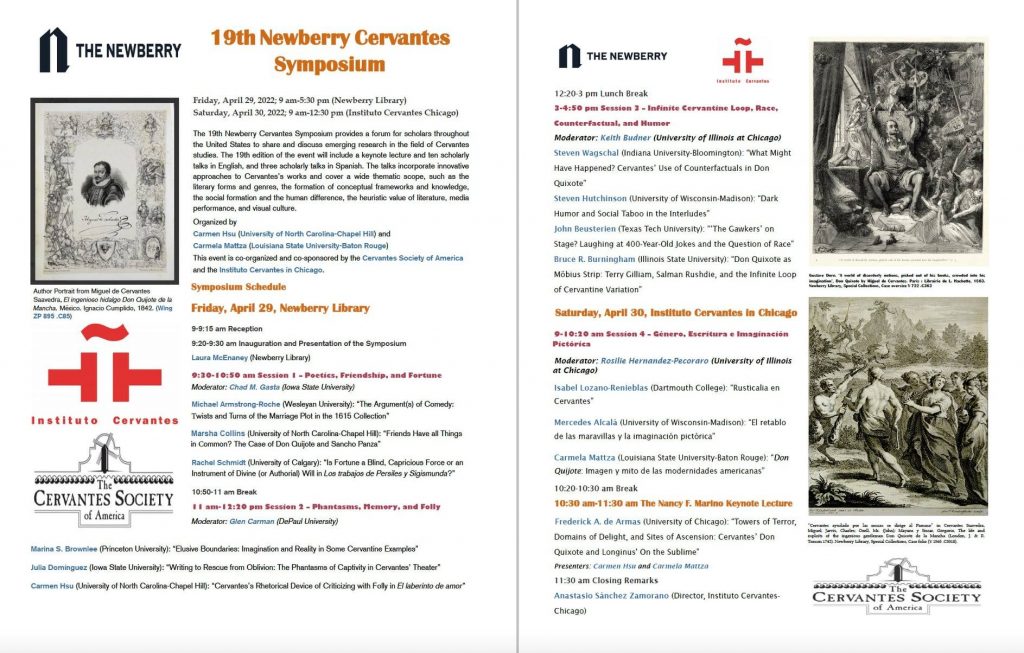
The 19th Newberry Cervantes Symposium provides a forum for scholars throughout the United States to share and discuss emerging research in the field of Cervantes studies. The 19th edition of the event will include a keynote lecture and ten scholarly talks in English, and three scholarly talks in Spanish. The talks incorporate innovative approaches to Cervantes’s works and cover a wide thematic scope, such as the literary forms and genres, the formation of conceptual frameworks and knowledge, the social formation and the human difference, the heuristic value of literature, media performance, and visual culture.
This event is co-organized and co-sponsored by the Cervantes Society of America and the Instituto Cervantes in Chicago.
For those who would like to join us those days, please note that there is a registration form linked at the bottom of the symposium webpage,
https://www.newberry.org/04292022-19th-newberry-cervantes-symposium
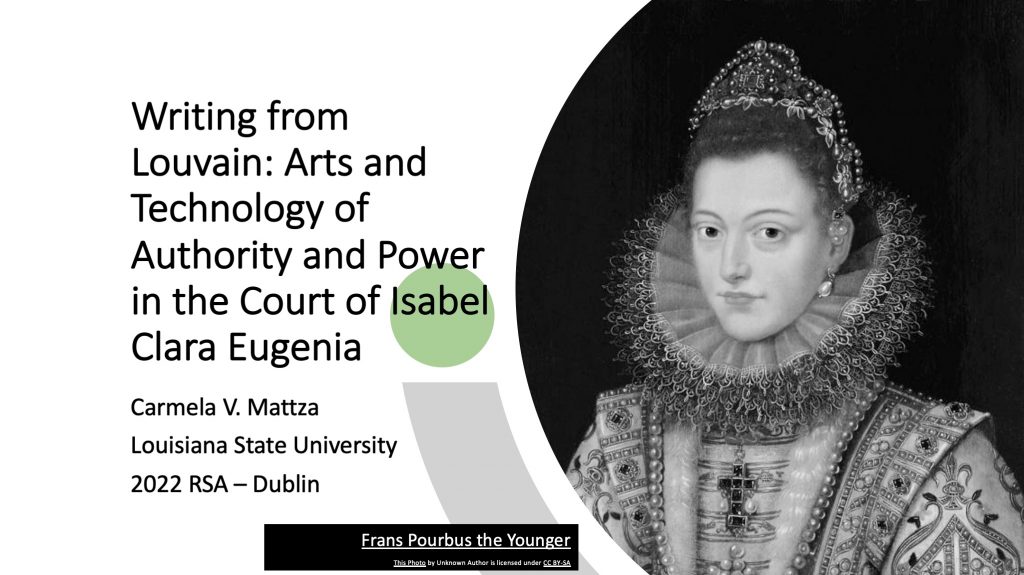
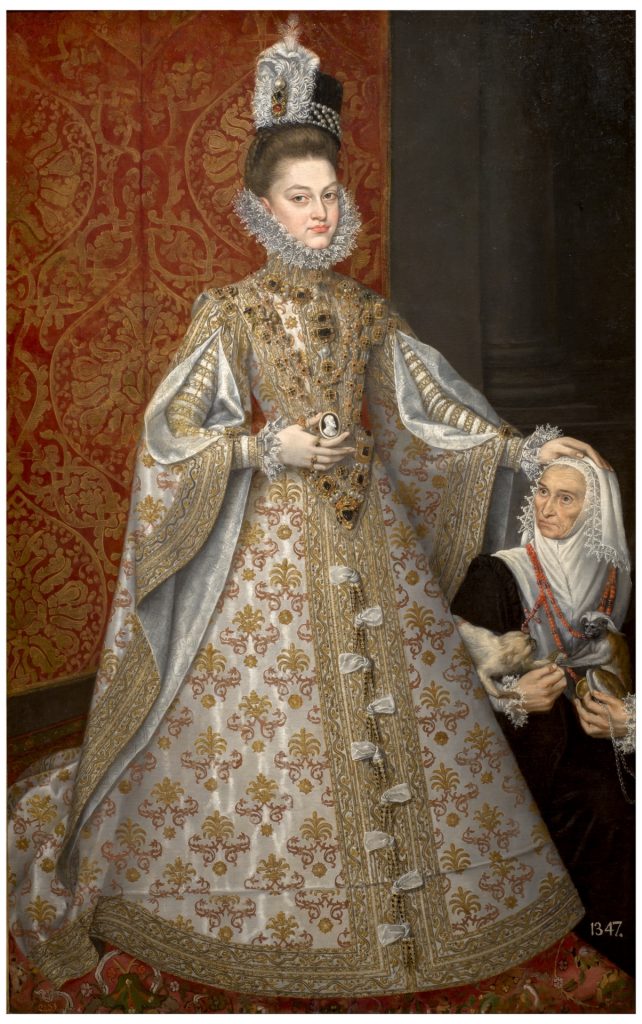

Carmela V. Mattza
Louisiana State University
2022 RSA – Dublin
Thanks to her performance in the restoration and defense of the Catholic faith in the Spanish Netherlands and her political role as governor, the figure of the Infanta Isabel Clara Eugenia as a female model of Christianity, became part of an iconography of authority and power that the House of Habsburgs knew how to take advantage of and mobilize through its various courts. The goal of this presentation is to offer a sample of how this iconography took place in Ghent in 1623 through the analysis of the anonymous account that appeared in Louvain in 1624, entitled Espejo Espiritual para que las Damas de Palacio se miren en él. Hecho a honra del Glorioso Padre S. Joseph, guarda mayor de las Damas. This presentation aims to highlight the feminine micro-cosmos of authority and power that took place in Ghent that combined the use of arts and technology to establish its validation.
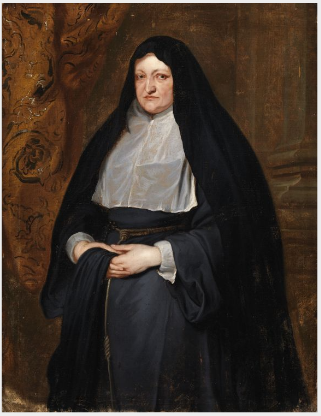
Find quiet contemplation and wonder in the familiar with Zurbarán’s simple still life. Join Christina Bradstreet from The National Gallery Learning team for a slow look at ‘A Cup of Water and a Rose’.